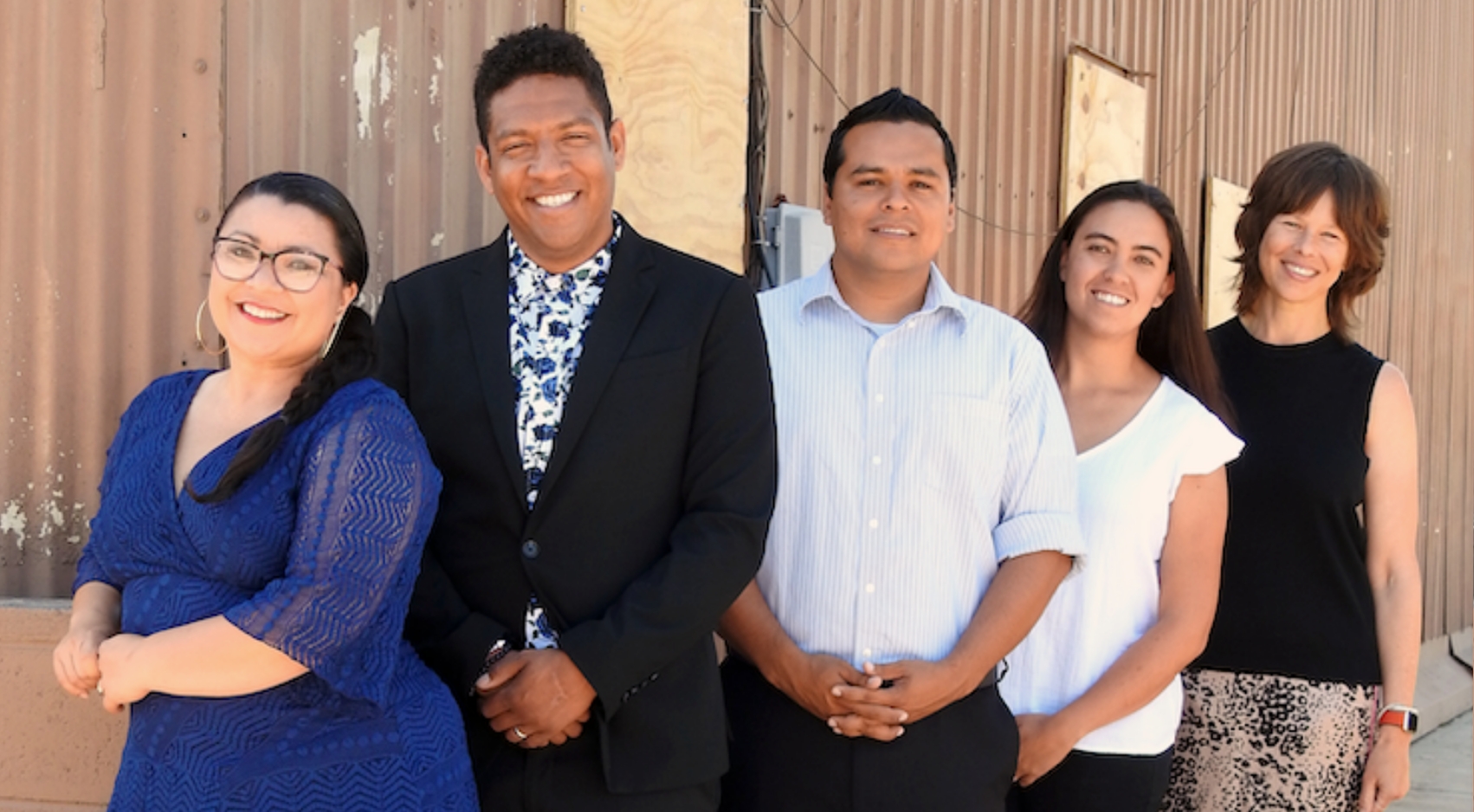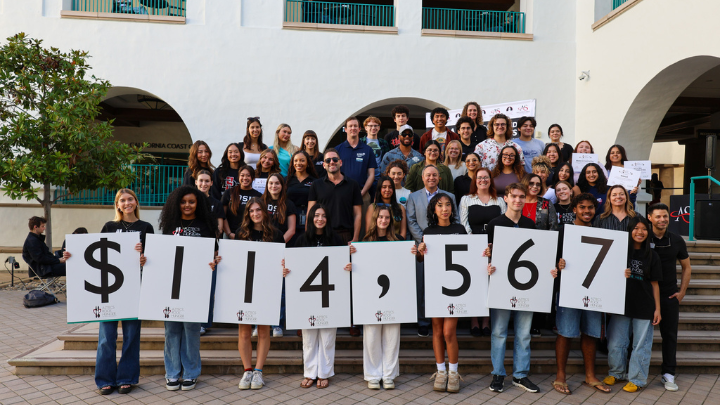SDSU Researchers Receive Nearly $800,000 in Grants to Assess National City's Brownfields
Grants from the EPA and the states Dept. of Toxic Substances Control will fund an inventory of National Citys brownfields and test them for contaminants.

PHOTO
Alejandra Sotelo-Solis, National City Mayor; Marcus Bush, Vice Mayor; Councilmember José Rodriguez; SDSU assistant professor of city planning Madi Swayne; and executive director of the SDSU Center for Regional Sustainability, Jessica Barlow. (Susanne Clara Bard/SDSU)
In downtown National City, the entire façade of an old storefront is covered over in off-white paint. Originally built in 1930, National City purchased the property along with the vacant lot next door in the early 2000s. The city plans to build a transit-friendly mixed-use development there to address the housing crisis and improve climate resilience in the city.
But both properties sit next to a historic dry cleaning business, and before any redevelopment can proceed, the soil needs to be tested for toxic substances.
“Contaminants from solvents get in the soil and then can actually get into the air, and so any building on top of that, it would end up in the air in the building,” said San Diego State University professor and executive director of the Center for Regional Sustainability Jessica Barlow.
Barlow and assistant professor of city planning Madi Swayne have been awarded a three-year, $500,000 grant from the U.S. Environmental Protection Agency and a two-year, $296,000 grant from the California Department of Toxic Substances Control to conduct environmental assessments of properties like these, known as brownfields, in National City.
“The EPA defines a brownfield as a property for which the reuse of any development might be complicated by the presence or perceived presence of a hazardous substance,” said Swayne.
The grants will provide funds to research the history of National City’s brownfields, creating an inventory of these properties and what they were used for. Soil sampling will test for heavy metals, chlorinated solvents, petroleum hydrocarbons and other contaminants.
“There’s an opportunity to get better information on each parcel and understand how much needs to be invested to be able to bring it back to reuse,” said Carlos Aguirre, director of National City’s housing authority.
Environmental justice
Founded in 1887, National City is a very diverse and densely populated community in the South Bay. Because of its location and history, it has historically been home to many brownfields. Just north of the U.S.-Mexico border, it’s flanked by several freeways, the Port of San Diego, a naval base and a historic railroad depot. All sources of pollution in their own right, these features also allowed industry and housing to spring up right next to each other.
“And that can have real impacts on people who are living in those residential areas. They're just sort of surrounded by all of this industrial activity,” said Swayne. “This history of mixed uses has just created multiple pathways for environmental contamination and human health impacts for folks living in National City.”
The city ranks in the top 25% of communities disproportionately affected by pollution statewide according to the California Office of Environmental Health Hazard Assessment’s Screening Tool, or CalEnviroScreen. Residents are impacted by high rates of asthma and several other serious health conditions.
“Environmental harm is spread across our neighborhoods in ways that disproportionately burden low-income and communities of color,” said Swayne.
The grants prioritize sites that, if redeveloped, could reduce the environmental justice burden by improving the quality of life in National City. For example, the site of a former auto shop located in the middle of a residential area downtown could provide 38 units of affordable housing, and a former welding shop could be transformed into green space, community gardens and bike paths.
“Through these grants, they prioritize certain parcels that have the potential to do more than just clean up the soil,” said Aguirre. “They will actually be developed into areas where the community can thrive economically, socially and academically.”
Barlow says developers often shy away from building in neighborhoods with environmental concerns because of the expense involved in remediation, and won’t take the risk unless someone else does it first.
“If they've done all these assessments and found that certain parcels are clean, then that means they can move forward with developing these sites and get rid of the perceived stigma associated with empty lots and also build affordable housing or build green spaces other needs that the community has or wants,” said Barlow.
After the initial brownfields assessment is complete, SDSU and National City will be able to apply for additional grants for sites that need to be cleaned up prior to redevelopment.
A Brownfields Advisory Committee, made up of several non-profit and government organizations, will partner with SDSU to guide the grants and engage in site inventories and reuse planning. They will also play an important role in community outreach.
“There's a really huge community engagement component where we collaborate with the community so that they drive the vision for these spaces, based on what is important to them,” said Barlow.
Hands-on learning
National City has a long-standing relationship with SDSU and became the first Sage Project partner in 2013, working with students on projects to promote sustainability and quality of life. Sage Project classes have returned to National City a number of times since then, and for the brownfields study, students from a variety of disciplines will have the opportunity to research and map the properties, shadow environmental consultants as they conduct soil sampling, and assist with community engagement.
“The win-win that has always driven this relationship is there's a lot of motivation on behalf of both staff and students to just get in the weeds and really understand what's going on in the community,” said Aguirre.
“San Diego State University has been a great working partner with National City by providing technical assistance and developing our capacity and resources to move strategic initiatives forward,” said National City mayor Alejandra Sotelo-Solis. “These grants provide a unique opportunity to utilize SDSU’s capabilities to jumpstart the remediation of land that is well-positioned to serve the needs of National City residents and bring further economic development and sustainability to our city.”
The National City brownfields grants are connected to SDSU’s Community Climate Action Network (CCAN), part of the Office of the President’s Big Ideas Initiative.



